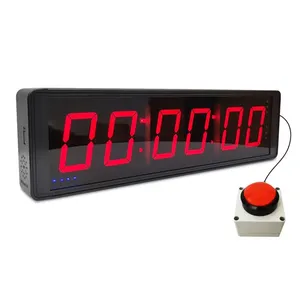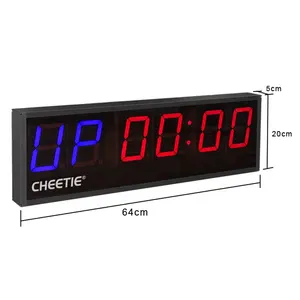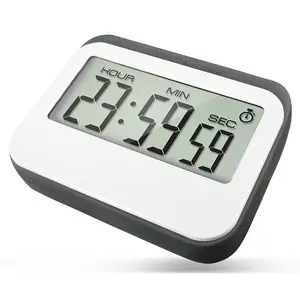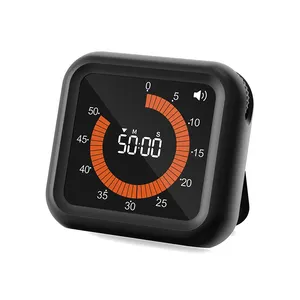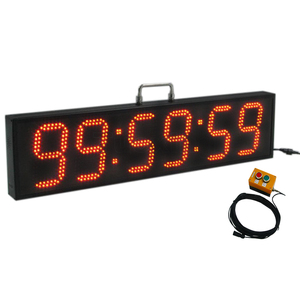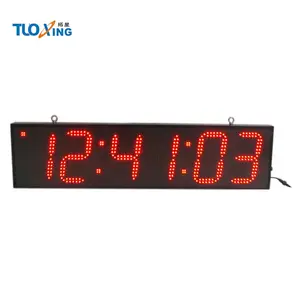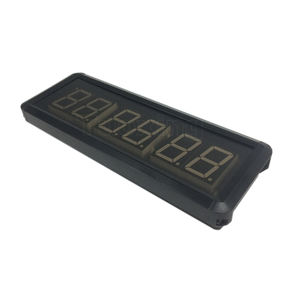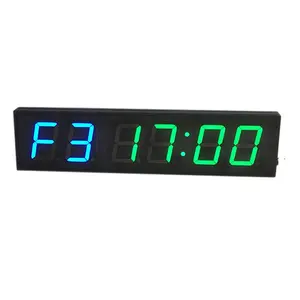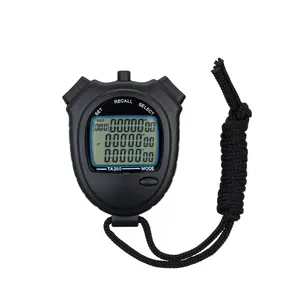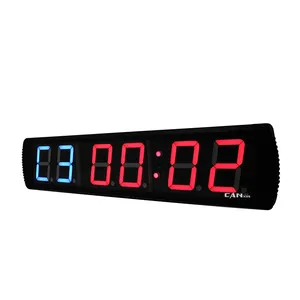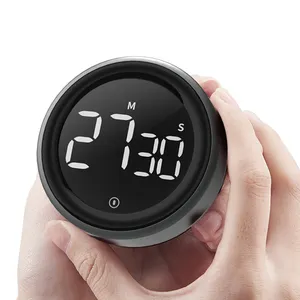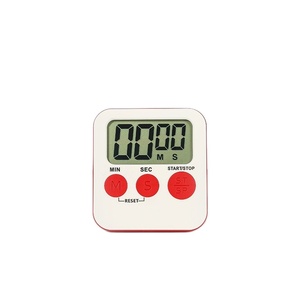Stop Clock Timer







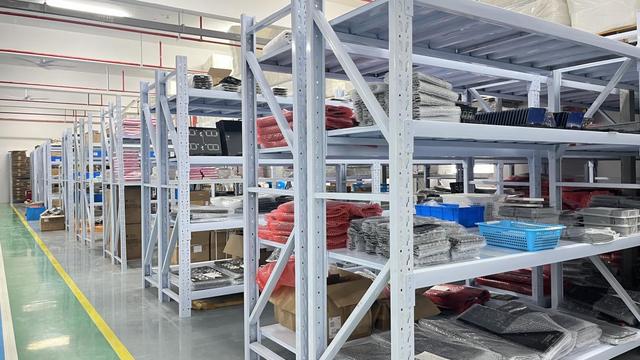
















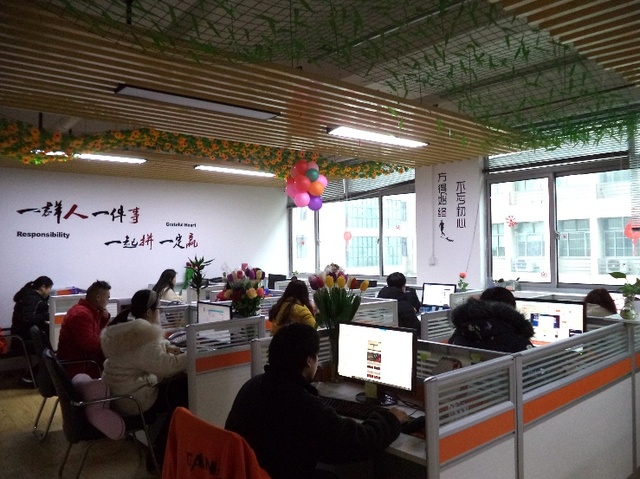




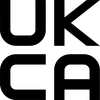



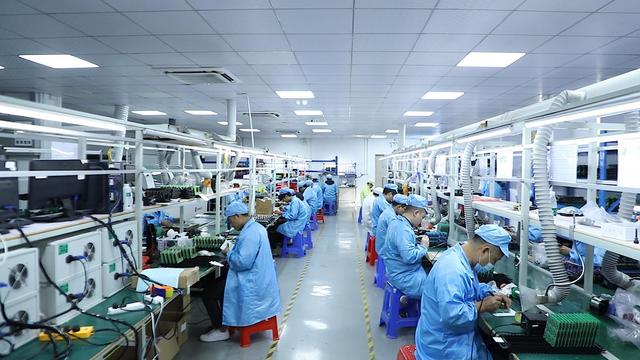





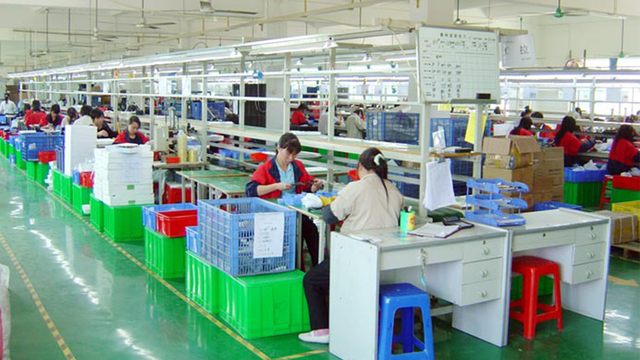























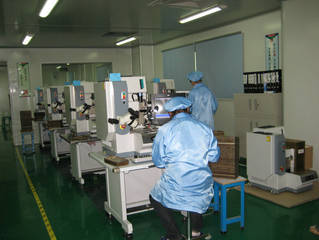











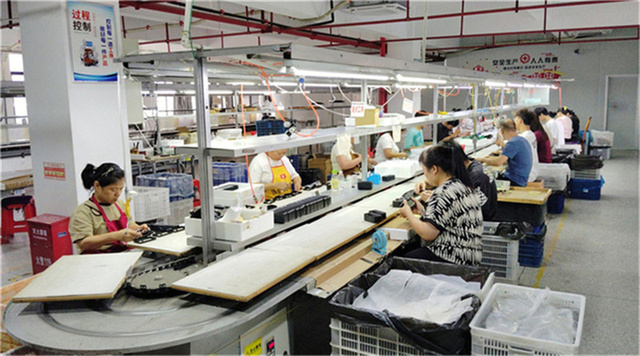





About stop clock timer
Where to Find Stop Clock Timer Suppliers?
China remains the central hub for stop clock timer manufacturing, with key production clusters in Zhejiang and Jiangsu provinces. Hangzhou and Shenzhen serve as primary innovation and export centers, hosting suppliers equipped with automated electronics assembly lines and integrated R&D departments focused on timing accuracy, display clarity, and durability. These regions benefit from mature supply chains for LED modules, plastic molding, and microcontroller units, enabling rapid prototyping and scalable production.
Suppliers in these zones operate within tightly coordinated ecosystems that include PCB fabrication, battery integration, and waterproof sealing capabilities—critical for sports-grade timers. The proximity of component vendors reduces material lead times by 20–30% compared to offshore alternatives. Most manufacturers support monthly outputs ranging from 10,000 to over 100,000 units, depending on model complexity. This infrastructure allows for short production cycles (typically 15–30 days) and efficient handling of both bulk orders and customized configurations.
How to Choose Stop Clock Timer Suppliers?
Effective supplier selection requires a structured evaluation across technical, operational, and transactional dimensions:
Quality Assurance & Compliance
Verify adherence to international standards such as CE, RoHS, and FCC, particularly for electronic components and electromagnetic compatibility. While not always explicitly stated, reputable suppliers implement ISO 9001-aligned quality management systems to ensure consistent performance across batches. Request test reports for critical functions including timekeeping precision (±0.5 seconds/day), water resistance (IPX4 or higher for outdoor use), and screen visibility under direct sunlight.
Production & Customization Capability
Assess scalability and flexibility through the following indicators:
- Minimum Order Quantity (MOQ) below 10 pieces indicates small-batch agility; larger runs often reduce per-unit costs significantly
- In-house design teams capable of modifying housing color, button layout, display size, or firmware logic (e.g., countdown/count-up modes)
- Support for logo printing, custom packaging, and multi-language instruction labels
Cross-reference product listings with response times and on-time delivery rates—suppliers maintaining ≤2-hour response and ≥94% fulfillment are more likely to manage order changes efficiently.
Transaction Security & Procurement Strategy
Utilize secure payment mechanisms such as escrow services to mitigate risk during initial engagements. Prioritize suppliers with transparent revenue metrics and reorder rates below 15%, indicating broad customer acquisition rather than reliance on repeat buyers. Conduct sample testing to validate build quality, battery life (minimum 6 months under daily use), and ease of operation before scaling procurement.
What Are the Best Stop Clock Timer Suppliers?
| Company Name | Main Products | Price Range (USD) | Min. Order | On-Time Delivery | Avg. Response | Reorder Rate | Online Revenue | Customization Options |
|---|---|---|---|---|---|---|---|---|
| Nanjing Gorilla International Trade Co., Ltd. | Sports Timing Devices, Digital Stopwatches | $1.20–$37 | 1–2 pieces | 100% | ≤2h | <15% | US $70,000+ | No |
| Hangzhou Yizhi Sports Goods Co., Ltd. | Gym Timers, Track & Field Clocks | $35–$715 | 1–2 pieces/set | 94% | ≤3h | <15% | US $40,000+ | Yes |
| Hangzhou Jhering Sports Technology Co., Ltd. | LED Countdown Clocks, Large Display Timers | $6.30–$115 | 2–100 pieces | 100% | ≤2h | <15% | US $20,000+ | No |
| Shenzhen Ryk Technology Co., Ltd. | Digital LED Timers, Multi-Sport Clocks | $4.80–$75 | 1 piece | 81% | ≤4h | 17% | US $230,000+ | No |
| Hangzhou Cheetie Electronic Co., Ltd. | Classroom, MMA, Boxing, Challenge Timers | $25–$100 | 1 unit | 100% | ≤6h | <15% | US $190,000+ | Yes |
Performance Analysis
Nanjing Gorilla and Hangzhou Jhering offer entry-level digital stopwatches at highly competitive prices ($1.20–$6.30), suitable for high-volume educational or recreational use. Hangzhou Cheetie and Yizhi specialize in application-specific designs—such as boxing rounds or classroom challenges—with full customization support, justifying higher price points. Shenzhen Ryk leads in online sales volume (US $230,000+), though its 81% on-time delivery rate presents a moderate fulfillment risk. All top-tier suppliers maintain sub-6-hour response times, with three achieving 100% on-time shipment records. For mission-critical deployments (e.g., athletic events or industrial processes), prioritize suppliers offering verified delivery performance and firmware reliability.
FAQs
How to verify stop clock timer supplier reliability?
Cross-check declared certifications (CE, RoHS) and request product test summaries. Analyze supplier responsiveness, order fulfillment history, and customer feedback focusing on device accuracy and long-term durability. Video audits of production lines can confirm in-house control over assembly and QC processes.
What is the typical lead time for stop clock timers?
Standard orders ship within 10–15 days after confirmation. Customized models with branded enclosures or modified firmware require 20–30 days, including approval cycles. Air freight adds 5–7 days globally; sea shipping takes 25–40 days depending on destination port.
Can suppliers provide free samples?
Sample availability varies. Some suppliers offer paid samples refundable against future orders, while others charge full cost upfront. Free samples are typically reserved for high-potential buyers placing anticipated orders above 500 units.
Do manufacturers support OEM/ODM services?
Yes, select suppliers like Hangzhou Cheetie and Hangzhou Yizhi offer comprehensive OEM/ODM support—including housing redesign, software interface adjustments, and packaging branding—subject to MOQs starting at 500 units.
What are common materials used in stop clock timer construction?
Housings are typically made from ABS plastic for impact resistance, with rubberized edges for drop protection. Buttons use conductive silicone pads, and displays range from LCD to high-brightness LED panels. Waterproof models incorporate sealed gaskets and conformal coating on internal circuits.

